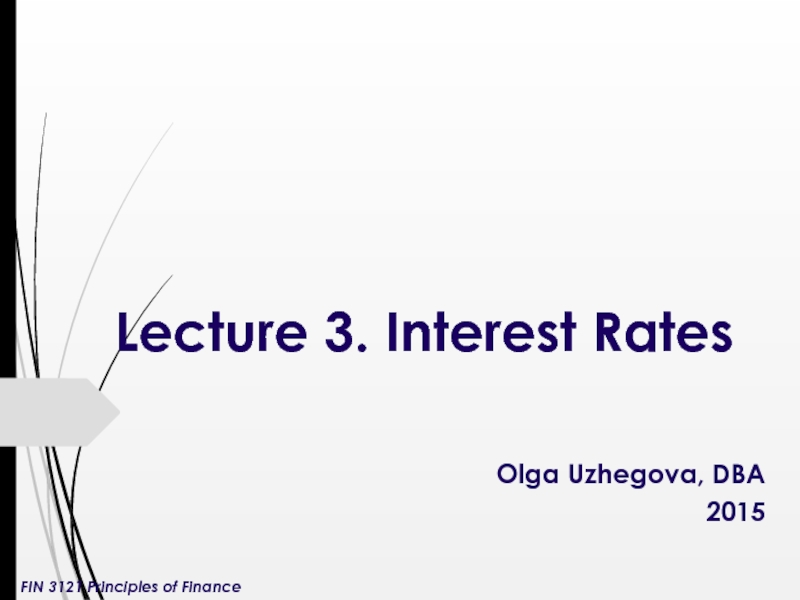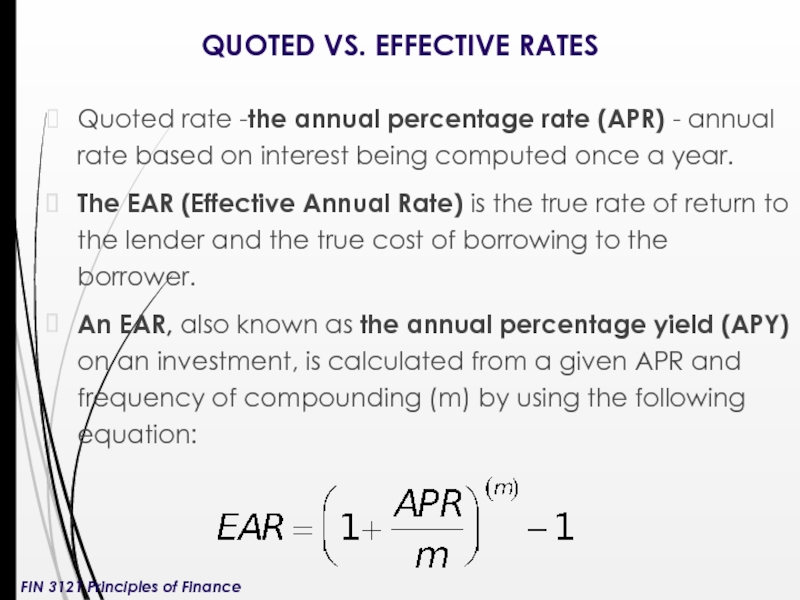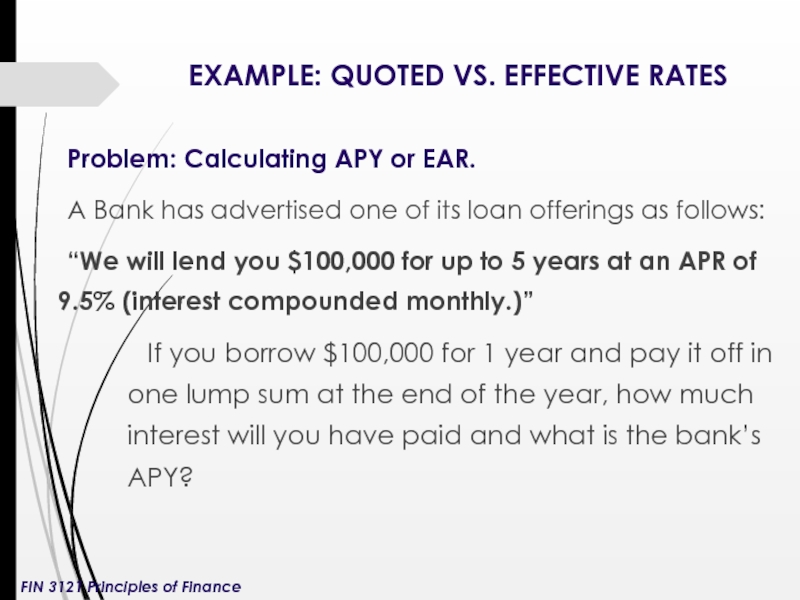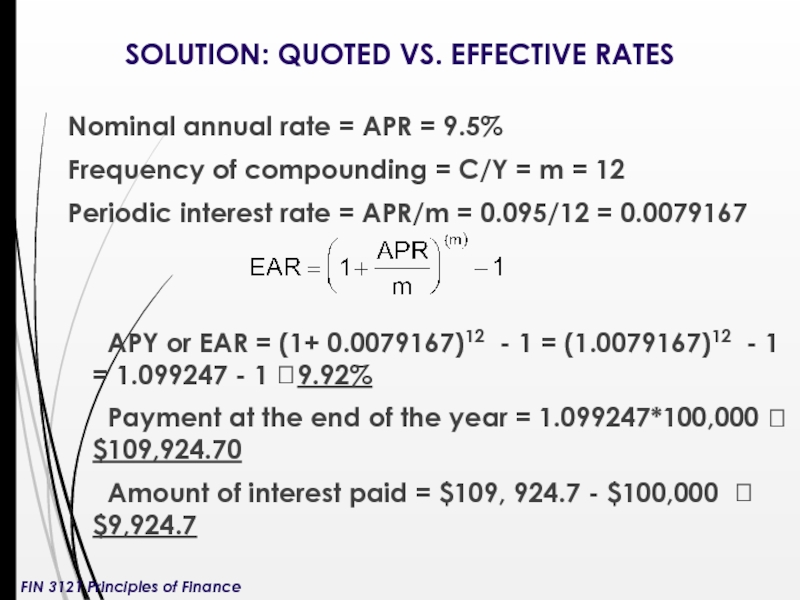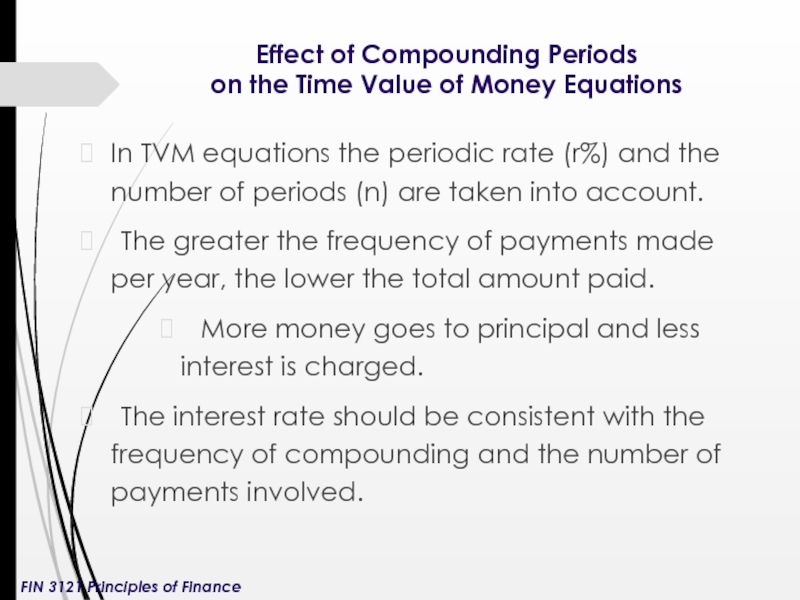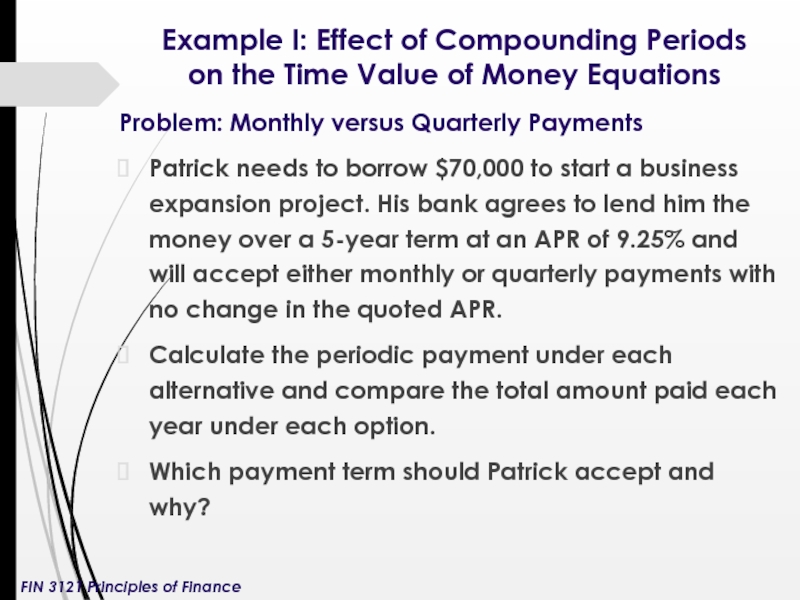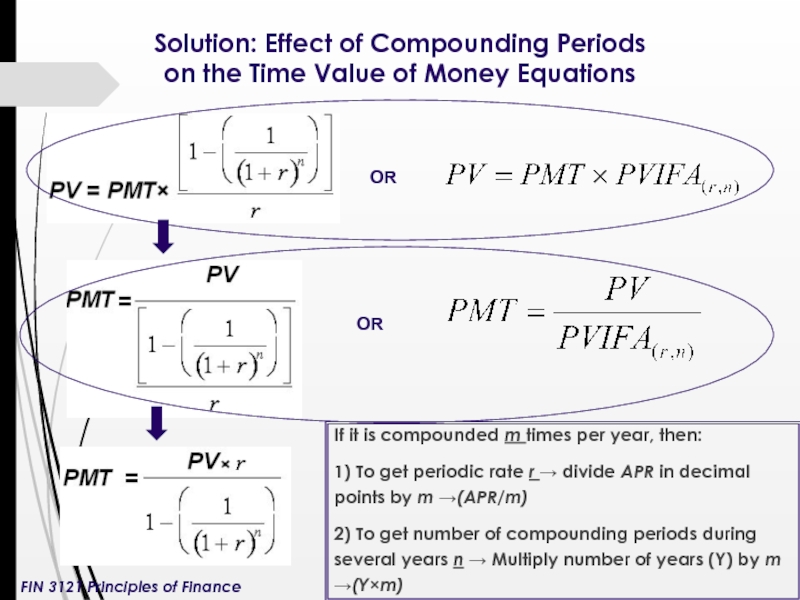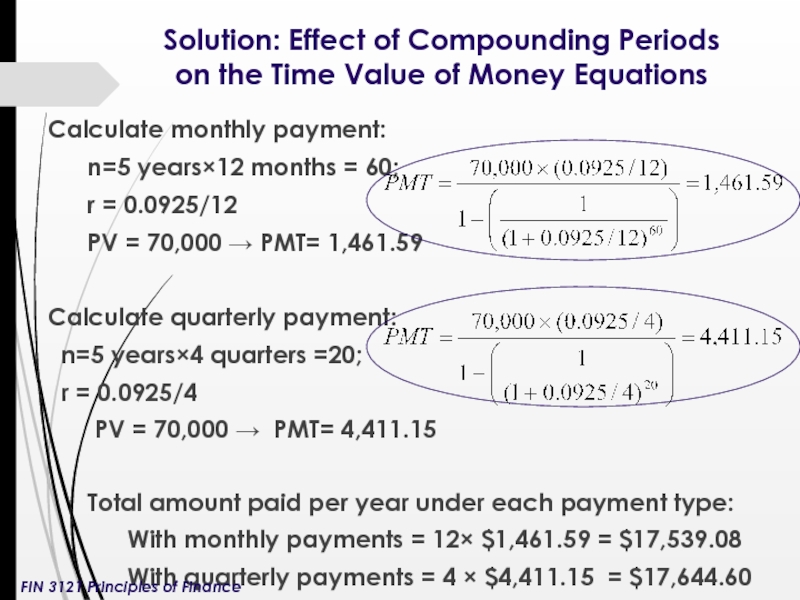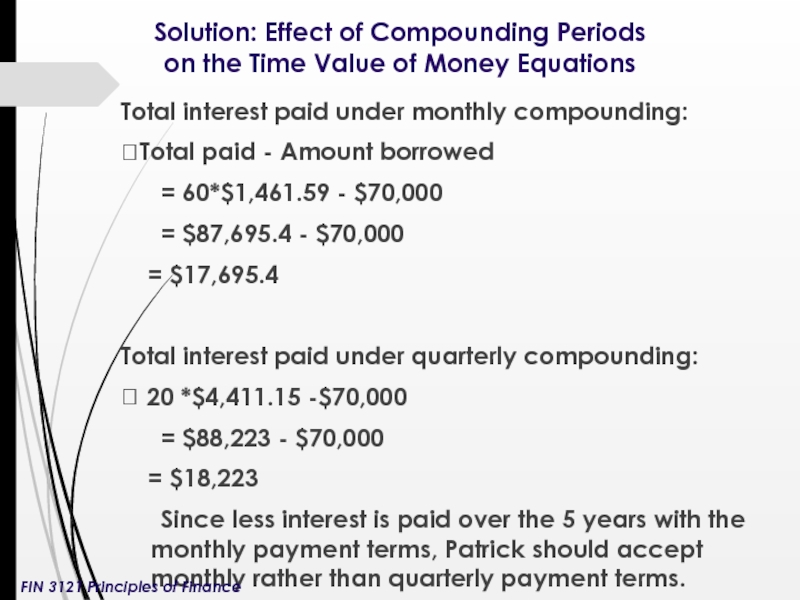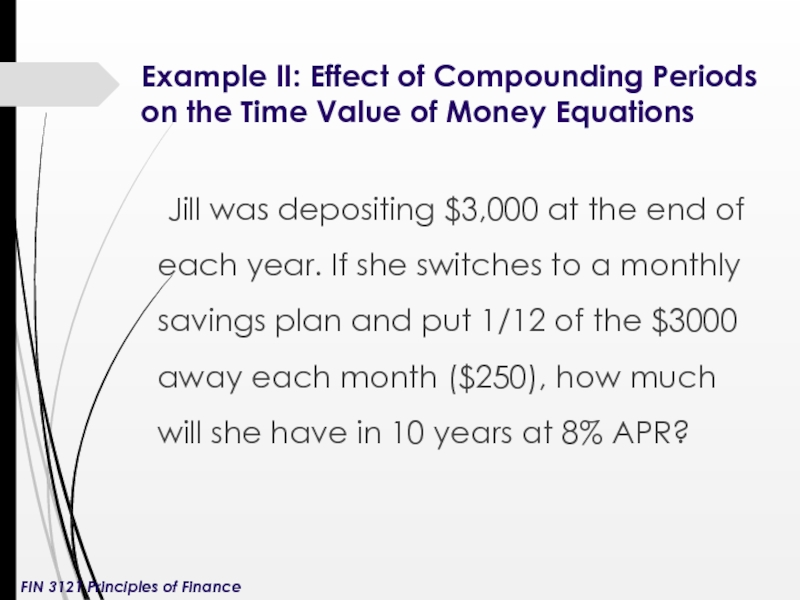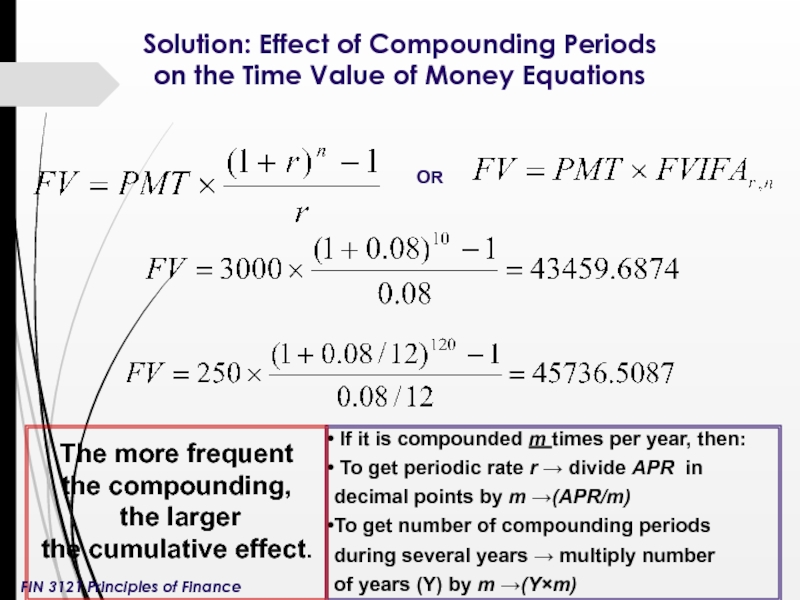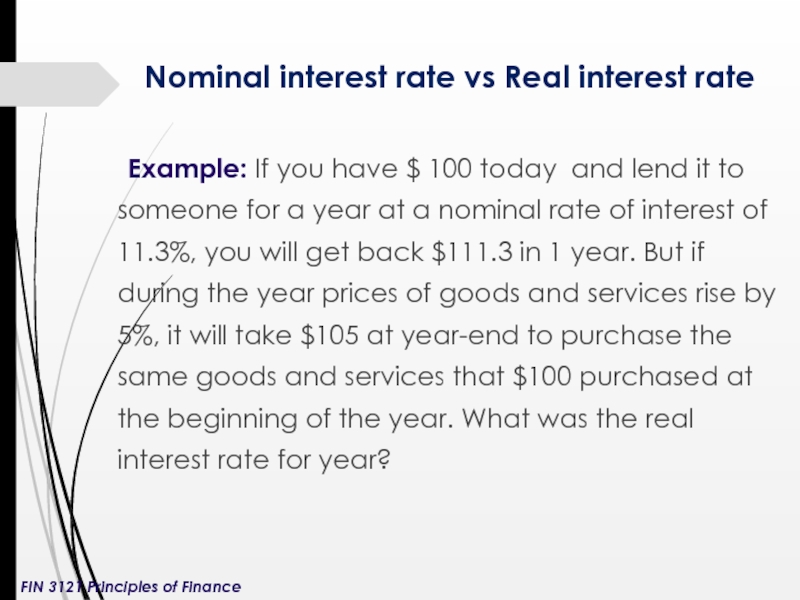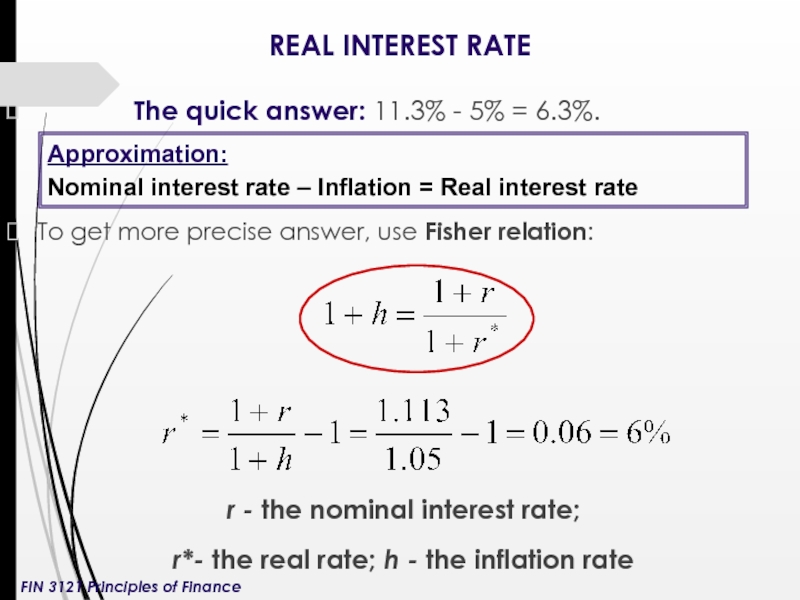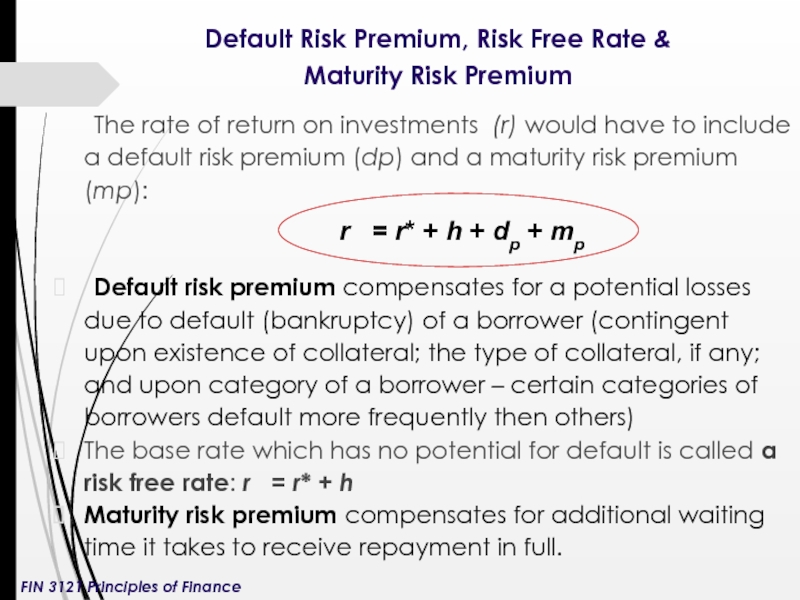- Главная
- Разное
- Дизайн
- Бизнес и предпринимательство
- Аналитика
- Образование
- Развлечения
- Красота и здоровье
- Финансы
- Государство
- Путешествия
- Спорт
- Недвижимость
- Армия
- Графика
- Культурология
- Еда и кулинария
- Лингвистика
- Английский язык
- Астрономия
- Алгебра
- Биология
- География
- Детские презентации
- Информатика
- История
- Литература
- Маркетинг
- Математика
- Медицина
- Менеджмент
- Музыка
- МХК
- Немецкий язык
- ОБЖ
- Обществознание
- Окружающий мир
- Педагогика
- Русский язык
- Технология
- Физика
- Философия
- Химия
- Шаблоны, картинки для презентаций
- Экология
- Экономика
- Юриспруденция
Interest rates. (Lecture 3) презентация
Содержание
- 1. Interest rates. (Lecture 3)
- 2. QUOTED VS. EFFECTIVE RATES Quoted rate -the
- 3. EXAMPLE: QUOTED VS. EFFECTIVE RATES Problem: Calculating
- 4. SOLUTION: QUOTED VS. EFFECTIVE RATES Nominal annual
- 5. Effect of Compounding Periods on the
- 6. Example I: Effect of Compounding Periods
- 7. Solution: Effect of Compounding Periods on
- 8. Solution: Effect of Compounding Periods on
- 9. Solution: Effect of Compounding Periods on
- 10. Example II: Effect of Compounding Periods
- 11. Solution: Effect of Compounding Periods on
- 12. Nominal interest rate vs Real interest rate
- 13. Example: If you have $ 100
- 14. REAL INTEREST RATE
- 15. Default Risk Premium, Risk Free Rate &
- 16. THE END FIN 3121 Principles of Finance
Слайд 2QUOTED VS. EFFECTIVE RATES
Quoted rate -the annual percentage rate (APR) -
The EAR (Effective Annual Rate) is the true rate of return to the lender and the true cost of borrowing to the borrower.
An EAR, also known as the annual percentage yield (APY) on an investment, is calculated from a given APR and frequency of compounding (m) by using the following equation:
FIN 3121 Principles of Finance
Слайд 3EXAMPLE: QUOTED VS. EFFECTIVE RATES
Problem: Calculating APY or EAR.
A Bank
“We will lend you $100,000 for up to 5 years at an APR of 9.5% (interest compounded monthly.)”
If you borrow $100,000 for 1 year and pay it off in one lump sum at the end of the year, how much interest will you have paid and what is the bank’s APY?
FIN 3121 Principles of Finance
Слайд 4SOLUTION: QUOTED VS. EFFECTIVE RATES
Nominal annual rate = APR = 9.5%
Frequency
Periodic interest rate = APR/m = 0.095/12 = 0.0079167
APY or EAR = (1+ 0.0079167)12 - 1 = (1.0079167)12 - 1 = 1.099247 - 1 ?9.92%
Payment at the end of the year = 1.099247*100,000 ? $109,924.70
Amount of interest paid = $109, 924.7 - $100,000 ? $9,924.7
FIN 3121 Principles of Finance
Слайд 5Effect of Compounding Periods
on the Time Value of Money Equations
In
The greater the frequency of payments made per year, the lower the total amount paid.
More money goes to principal and less interest is charged.
The interest rate should be consistent with the frequency of compounding and the number of payments involved.
FIN 3121 Principles of Finance
Слайд 6Example I: Effect of Compounding Periods on the Time Value of
Problem: Monthly versus Quarterly Payments
Patrick needs to borrow $70,000 to start a business expansion project. His bank agrees to lend him the money over a 5-year term at an APR of 9.25% and will accept either monthly or quarterly payments with no change in the quoted APR.
Calculate the periodic payment under each alternative and compare the total amount paid each year under each option.
Which payment term should Patrick accept and why?
FIN 3121 Principles of Finance
Слайд 7Solution: Effect of Compounding Periods on the Time Value of Money
If it is compounded m times per year, then:
1) To get periodic rate r → divide APR in decimal points by m →(APR/m)
2) To get number of compounding periods during several years n → Multiply number of years (Y) by m →(Y×m)
OR
OR
FIN 3121 Principles of Finance
Слайд 8Solution: Effect of Compounding Periods on the Time Value of Money
Calculate monthly payment:
n=5 years×12 months = 60;
r = 0.0925/12
PV = 70,000 → PMT= 1,461.59
Calculate quarterly payment:
n=5 years×4 quarters =20;
r = 0.0925/4
PV = 70,000 → PMT= 4,411.15
Total amount paid per year under each payment type:
With monthly payments = 12× $1,461.59 = $17,539.08
With quarterly payments = 4 × $4,411.15 = $17,644.60
FIN 3121 Principles of Finance
Слайд 9Solution: Effect of Compounding Periods on the Time Value of Money
Total interest paid under monthly compounding:
?Total paid - Amount borrowed
= 60*$1,461.59 - $70,000
= $87,695.4 - $70,000
= $17,695.4
Total interest paid under quarterly compounding:
? 20 *$4,411.15 -$70,000
= $88,223 - $70,000
= $18,223
Since less interest is paid over the 5 years with the monthly payment terms, Patrick should accept monthly rather than quarterly payment terms.
FIN 3121 Principles of Finance
Слайд 10Example II: Effect of Compounding Periods on the Time Value of
Jill was depositing $3,000 at the end of each year. If she switches to a monthly savings plan and put 1/12 of the $3000 away each month ($250), how much will she have in 10 years at 8% APR?
FIN 3121 Principles of Finance
Слайд 11Solution: Effect of Compounding Periods on the Time Value of Money
If it is compounded m times per year, then:
To get periodic rate r → divide APR in
decimal points by m →(APR/m)
To get number of compounding periods
during several years → multiply number
of years (Y) by m →(Y×m)
OR
The more frequent
the compounding,
the larger
the cumulative effect.
FIN 3121 Principles of Finance
Слайд 12Nominal interest rate vs Real interest rate
Nominal interest rates (r) are
The real rate of interest is a reward for waiting
Nominal rate: r = r* + h (approximation)
Fischer Effect: the true nominal rate is made up of three components: the real rate, the inflation rate and the product of real and inflation rates:
r = r* + h +(r* ×h) (in decimal points) or
(1+r) = (1+r*) × (1+h)
FIN 3121 Principles of Finance
Слайд 13
Example: If you have $ 100 today and lend it to
Nominal interest rate vs Real interest rate
FIN 3121 Principles of Finance
Слайд 14REAL INTEREST RATE
The quick
To get more precise answer, use Fisher relation:
r - the nominal interest rate;
r*- the real rate; h - the inflation rate
Approximation:
Nominal interest rate – Inflation = Real interest rate
FIN 3121 Principles of Finance
Слайд 15Default Risk Premium, Risk Free Rate &
Maturity Risk Premium
The rate
Default risk premium compensates for a potential losses due to default (bankruptcy) of a borrower (contingent upon existence of collateral; the type of collateral, if any; and upon category of a borrower – certain categories of borrowers default more frequently then others)
The base rate which has no potential for default is called a risk free rate: r = r* + h
Maturity risk premium compensates for additional waiting time it takes to receive repayment in full.
r = r* + h + dp + mp
FIN 3121 Principles of Finance
